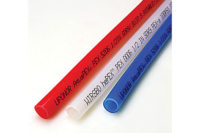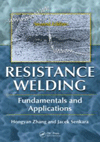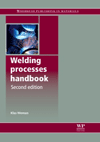The statistics relating to musculoskeletal conditions are frightening. In 2012, one of every two adults in the U.S. were diagnosed with some form of musculoskeletal disorder leading to 290.8 million work days lost due to back or neck pain.
While there are many possible reasons people develop musculoskeletal disorders, like aging, certain work environments can put workers at a higher risk. In recent years, health problems associated with sitting down for too much of the day have gained greater awareness, but many people aren’t aware of the dangers of prolonged periods of standing.
Standing all day can produce more than just aching feet. The full effects can be felt from head to toe. Prolonged standing can contribute to a variety of musculoskeletal disorders, including rheumatic conditions, spine-related problems and varicose veins. The pain and discomfort leads to increased absenteeism with a huge financial cost to businesses. A survey on working conditions conducted in Europe found that 40 million workers across the continent suffered from musculoskeletal disorders attributable to their work, at an estimated cost of 240 billion euros each year of lost
productivity.
There are several ways that workers can avoid falling victim to many of these issues. The most effective is to simply be more active. It sounds counterintuitive, but walking around will actually cause less fatigue than just standing still, so taking regular screen breaks and stepping away from a machine for a short walk can be a great solution to many of these problems.
Unfortunately for many workers, this simply isn’t an option. Many work environments require the constant attention of employees, like an assembly line at a vehicle manufacturing plant, and won’t be able to function is half the workforce is out stretching their legs.
For those who aren’t able to venture far from their workstations there is a solution: specially designed industrial matting. These anti-fatigue mats were created to reduce the harmful effects of prolonged standing, with the additional benefit of improving grip levels on floors by trapping swarf and dirt within specially designed channels.
Anti-fatigue mats work by promoting micro-movements in the calf and leg muscles. Although these movements are unnoticeable, they are enough to keep workers slightly off balance, which means that they will be constantly adjusting their feet rather than remaining in a completely static position.
These micro-movements are important because they engage the circulatory system, specifically the venous pump. Each time lower leg muscles contract, this motion squeezes blood back up towards the heart. There are also valves inside these veins for the purpose of controlling the blood flow direction. Each step taken contracts these muscles and helps to squeeze the blood back up to the heart, but
standing still forces the heart to work alone. The extra effort leads to increased fatigue levels, joint pain and muscle aches.
Frequently making natural changes to the standing position will also reduce tension in the shoulders and neck, alleviate headaches, and take pressure off the worker’s back. The softer surface is also substantially more comfortable than a cold, hard floor, easing pressure on feet, muscles and joints for workers.
In addition to the circulatory benefits, anti-fatigue mats can increase posture as the soft material reduces contact pressure and provides a supportive base. The mats can also increase workplace safety with a non-slip, textured surface and grooved underside that traps dirt and debris.
It can be difficult to imagine how a simple floor mat can be so effective at fighting against such a wide range of health problems, but these claims have been backed up with several tests and surveys.
In an experiment conducted by Loughborough University in the United Kingdom, researchers used thermal imaging and a controlled testing environment to find that significant benefits could be seen after just 90 minutes on the mats compared with a concrete floor. Another independent survey conducted in 2015 yielded positive results from users of anti-fatigue mat, including 44 percent reporting an increase in productivity and 23 percent reporting reduced absenteeism.
Just as important as using anti-fatigue mats is finding the most appropriate mat for each specific work environment. There are thousands on the market, all of which offer different features, such as extra wear resistance in heavy-usage environments, patterned surfaces to capture debris, fire resistant coatings for welding areas, and yellow safety borders to avoid trip hazards. Additionally, mats can be made for individual workstations, or they can be produced as long rolls to extend the length of an assembly line.
With the health benefits and productivity gains that they can bring, anti-fatigue mats should be seen as an investment rather than another unwanted cost. Anti-fatigue mats increase safety and productivity, good news for both businesses and their employees.







